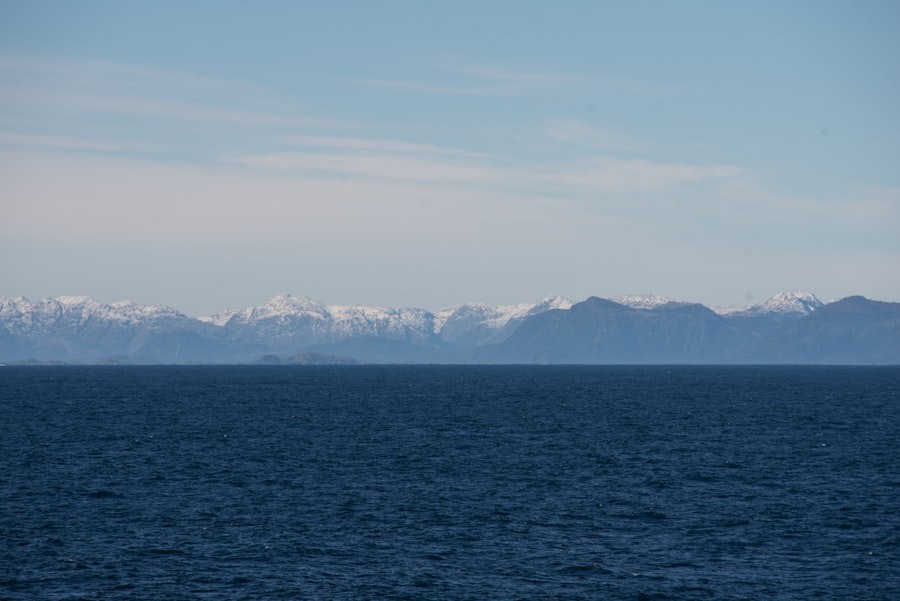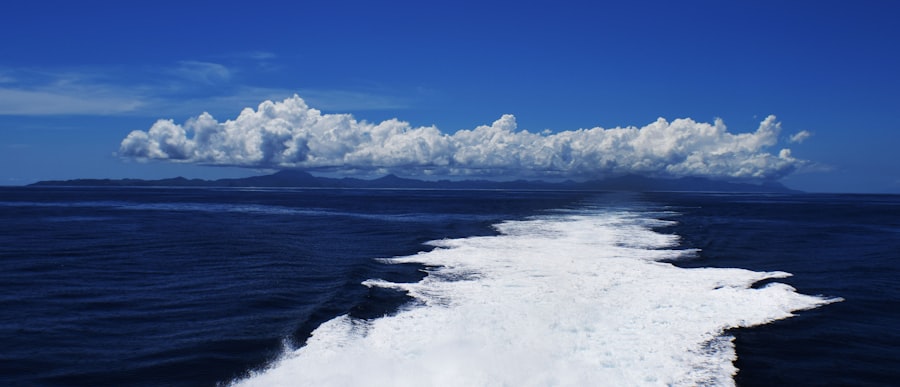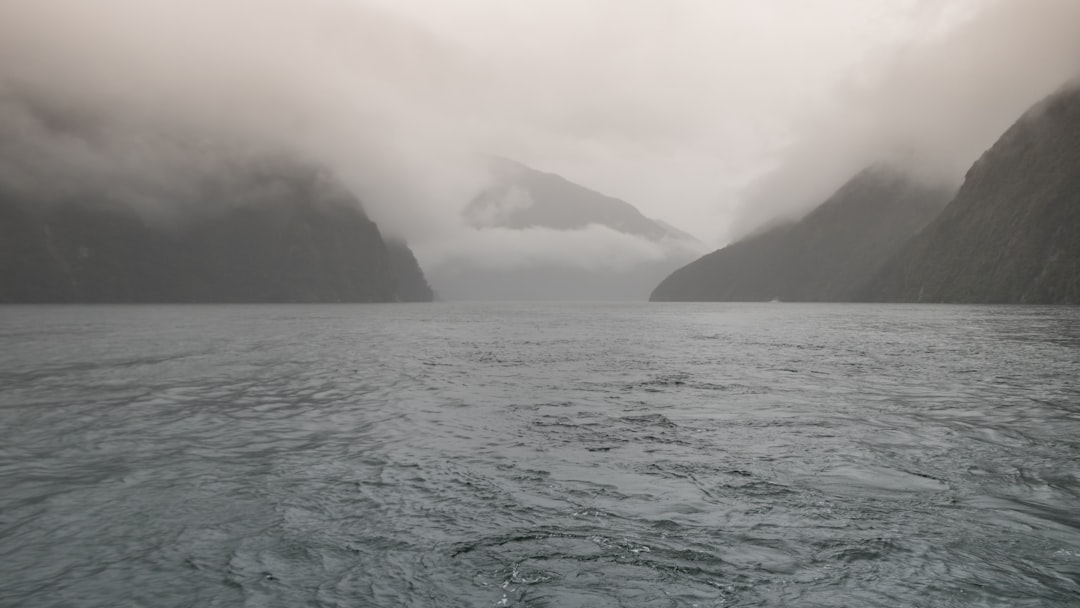The Drake Passage, a body of water that separates South America from Antarctica, is renowned for its tumultuous seas and breathtaking vistas. Named after the English explorer Sir Francis Drake, who navigated these waters in the late 16th century, the passage has become a significant route for adventurers and researchers alike. Stretching approximately 600 kilometers (370 miles) at its widest point, it serves as a gateway to the Antarctic region, drawing travelers eager to experience its unique blend of natural beauty and challenging conditions.
This passage is not merely a geographical feature; it is a symbol of exploration and the spirit of adventure. The waters are often described as some of the roughest on the planet, with unpredictable weather patterns and strong currents. Despite these challenges, the Drake Passage remains a coveted destination for those seeking to witness the raw power of nature and the stunning landscapes that surround it.
As travelers embark on their journeys across this iconic stretch of ocean, they are met with both awe-inspiring sights and the thrill of navigating one of the world’s most formidable maritime routes.
Key Takeaways
- The Drake Passage is a treacherous body of water located between the southern tip of South America and the northern tip of Antarctica.
- Navigating the Drake Passage presents challenges such as strong winds, rough seas, and unpredictable weather conditions.
- Proper preparation and safety measures, including sea sickness medication and emergency protocols, are essential for crossing the Drake Passage.
- Choosing the right vessel, such as a sturdy expedition ship, is crucial for a safe and comfortable journey through the Drake Passage.
- The Drake Passage offers stunning wildlife and scenery, including the opportunity to see penguins, whales, and icebergs.
Understanding the Challenges of Navigating the Drake Passage
Navigating the Drake Passage is not for the faint-hearted. The waters are notorious for their unpredictable weather, which can shift from calm to chaotic in a matter of moments. The convergence of the Atlantic and Pacific Oceans creates a unique set of conditions that can lead to towering waves and strong winds.
Mariners often describe the experience as a test of skill and resilience, as they must remain vigilant and adaptable to the ever-changing environment. The challenges extend beyond just the physical conditions of the water. The passage is also home to various marine hazards, including icebergs and shifting currents that can complicate navigation.
For those unfamiliar with these waters, it is essential to have a deep understanding of maritime navigation techniques and to be equipped with reliable technology. The combination of natural obstacles and unpredictable weather makes crossing the Drake Passage a formidable undertaking that requires careful planning and respect for the sea.
Preparation and Safety Measures for Crossing the Drake Passage

Preparation is key when it comes to crossing the Drake Passage. Adventurers must equip themselves with not only the right gear but also a solid understanding of safety protocols. Before embarking on their journey, travelers should familiarize themselves with emergency procedures and ensure that their vessel is well-stocked with safety equipment, including life jackets, flares, and first aid kits.
Knowledge of basic survival skills can also prove invaluable in case of unexpected situations. In addition to physical preparations, mental readiness is equally important. The psychological demands of navigating such challenging waters can be significant.
Travelers should be prepared for potential seasickness and understand how to manage it effectively. Many seasoned sailors recommend acclimatizing to rough seas by gradually increasing exposure to similar conditions before attempting the crossing. This preparation not only enhances safety but also contributes to a more enjoyable experience as adventurers face the Drake Passage’s challenges head-on.
Choosing the Right Vessel for the Journey
| Vessel Type | Advantages | Disadvantages |
|---|---|---|
| Sailboat | Environmentally friendly, quiet, and can harness wind power | Dependent on wind conditions, slower than motorized vessels |
| Motorboat | Fast, reliable, and can cover long distances | Requires fuel, noisy, and has environmental impact |
| Kayak/Canoe | Maneuverable, great for exploring narrow waterways | Requires physical effort, limited storage space |
Selecting the appropriate vessel for a journey across the Drake Passage is crucial for ensuring safety and comfort. Various types of boats are suitable for this adventure, ranging from sturdy expedition ships designed specifically for polar waters to smaller yachts that offer a more intimate experience. Each option comes with its own set of advantages and disadvantages, making it essential for travelers to consider their preferences and needs carefully.
For those seeking a more robust experience, ice-strengthened vessels are often recommended. These ships are built to withstand harsh conditions and navigate through ice-laden waters, providing an added layer of security during the crossing. On the other hand, smaller vessels may offer greater maneuverability and a closer connection to nature, allowing travelers to experience the passage’s beauty in a more personal way.
Ultimately, choosing the right vessel involves balancing safety features with personal comfort and adventure goals.
Wildlife and Scenery in the Drake Passage
The Drake Passage is not only known for its challenging navigation but also for its rich biodiversity and stunning scenery. As travelers make their way across these waters, they are often treated to breathtaking views of rugged coastlines, towering icebergs, and expansive ocean vistas. The stark contrast between the deep blue sea and the white ice creates a visual spectacle that captivates all who venture here.
In addition to its dramatic landscapes, the passage is teeming with wildlife. Adventurers may encounter various species of seabirds, including albatrosses and petrels, soaring gracefully above the waves. Marine life is equally abundant, with opportunities to spot whales, seals, and even penguins in their natural habitats.
This unique ecosystem serves as a reminder of nature’s beauty and fragility, making every crossing an unforgettable experience filled with moments of wonder.
Weather and Climate Considerations

The weather in the Drake Passage can be notoriously unpredictable, making it essential for travelers to stay informed about current conditions before setting sail. The region experiences a maritime climate characterized by strong winds, frequent storms, and rapidly changing temperatures. These factors can significantly impact navigation and overall comfort during the journey.
Travelers should be prepared for a range of weather conditions, from sunny skies to heavy rain and snow. Layering clothing is advisable to accommodate fluctuating temperatures, ensuring that adventurers remain warm and dry throughout their crossing. Additionally, understanding seasonal variations can help travelers choose the best time for their journey; summer months typically offer milder conditions compared to winter when storms are more prevalent.
By staying informed about weather patterns, travelers can enhance their chances of a successful crossing.
Navigation Tips for a Smooth Passage
Successful navigation through the Drake Passage requires careful planning and attention to detail. Mariners should familiarize themselves with nautical charts specific to this region, as well as any potential hazards that may arise during their journey. Utilizing modern navigation technology, such as GPS systems and radar, can greatly enhance safety and efficiency while traversing these challenging waters.
In addition to technological aids, traditional navigation skills remain invaluable. Understanding how to read weather patterns and ocean currents can provide critical insights into optimal routes across the passage. Experienced sailors often recommend keeping a close eye on local forecasts and being prepared to adjust plans as needed based on real-time conditions.
By combining modern tools with time-tested techniques, adventurers can navigate the Drake Passage with greater confidence.
Activities and Excursions in the Drake Passage
While crossing the Drake Passage is an adventure in itself, there are numerous activities and excursions available that can enhance the overall experience. Many expedition cruises offer guided tours that allow travelers to explore nearby islands or participate in wildlife watching excursions. These activities provide opportunities to witness the region’s unique flora and fauna up close while learning from knowledgeable guides.
For those seeking a more hands-on experience, kayaking or small boat excursions can offer an intimate connection with nature. Paddling through icy waters allows adventurers to appreciate their surroundings from a different perspective while observing marine life in its natural habitat.
Cultural and Historical Significance of the Drake Passage
The Drake Passage holds significant cultural and historical importance beyond its geographical features. It has long been a site of exploration and discovery, attracting adventurers from around the world who seek to uncover its mysteries. The passage has been traversed by countless explorers throughout history, each leaving their mark on its legacy.
In addition to its exploration history, the Drake Passage has also played a role in scientific research related to climate change and marine ecosystems. Researchers study this unique environment to gain insights into global weather patterns and biodiversity conservation efforts. The cultural significance of this region extends beyond mere exploration; it embodies humanity’s quest for knowledge and understanding of our planet’s most remote corners.
Testimonials and Stories from Previous BVI Adventures
Many adventurers who have crossed the Drake Passage share stories filled with excitement, challenges, and unforgettable moments. Testimonials often highlight the sense of camaraderie among fellow travelers as they navigate through rough seas together, forging bonds that last long after their journey ends. These shared experiences create lasting memories that resonate deeply with those who have braved these waters.
One traveler recounted their awe at witnessing a pod of whales breaching nearby while navigating through turbulent waves—a moment that encapsulated both the beauty and unpredictability of the passage. Others have shared tales of overcoming seasickness or navigating through storms, emphasizing how these challenges ultimately contributed to their sense of accomplishment upon completing their journey. Such stories serve as inspiration for future adventurers considering their own crossings.
Making the Most of Your Drake Passage Experience
Crossing the Drake Passage is an adventure that promises both challenges and rewards for those willing to embrace its unpredictability.
From witnessing breathtaking wildlife to navigating through tumultuous waters, each moment spent in the Drake Passage becomes part of an unforgettable journey.
As adventurers reflect on their experiences crossing this iconic passage, they carry with them not only memories but also a deeper connection to nature’s power and beauty. The Drake Passage serves as a reminder of humanity’s enduring spirit of exploration—a testament to those who dare to venture into uncharted waters in search of adventure and discovery.
The Drake Passage is a renowned maritime route that connects the Atlantic and Pacific Oceans, often traversed by adventurous sailors and cruise ships heading to Antarctica. For those interested in exploring similar nautical adventures, the British Virgin Islands (BVI) offer a more tropical and tranquil sailing experience. An article on MyGeoQuest delves into the allure of the BVI, highlighting its crystal-clear waters, vibrant marine life, and the unique charm of its numerous islands. This destination provides a stark contrast to the challenging conditions of the Drake Passage, offering a serene escape for those seeking a different kind of maritime journey.
WATCH NOW! Drake Passage: Earth’s Deadliest Waters Revealed
FAQs
What is the Drake Passage?
The Drake Passage is the body of water between the southern tip of South America and the northern tip of the Antarctic Peninsula. It is known for its rough seas and strong winds, making it one of the most challenging and unpredictable maritime routes in the world.
What is BVI?
BVI stands for the British Virgin Islands, a British overseas territory located in the Caribbean. The BVI is known for its stunning beaches, crystal-clear waters, and excellent sailing and yachting opportunities.
What is the connection between the Drake Passage and BVI?
There is no direct connection between the Drake Passage and BVI. The Drake Passage is located in the Southern Hemisphere, while the BVI is located in the Caribbean, which is in the Northern Hemisphere. They are geographically and climatically distinct regions.
Can you sail from the Drake Passage to the BVI?
Sailing from the Drake Passage to the BVI would involve a long and challenging journey through different climate zones and ocean conditions. It is not a common or recommended route for recreational sailors due to the extreme conditions of the Drake Passage and the distance between the two locations.
What are the attractions of the Drake Passage and BVI?
The Drake Passage is known for its abundant wildlife, including whales, seals, and seabirds, as well as its dramatic scenery and unique polar environment. The BVI is famous for its beautiful beaches, clear waters, and excellent opportunities for sailing, snorkeling, and diving. Both destinations offer unique and unforgettable experiences for adventurous travelers.
